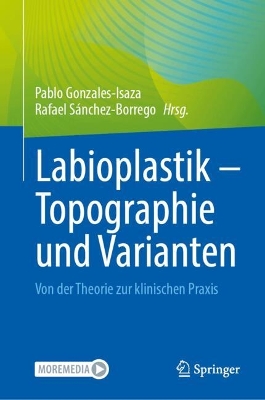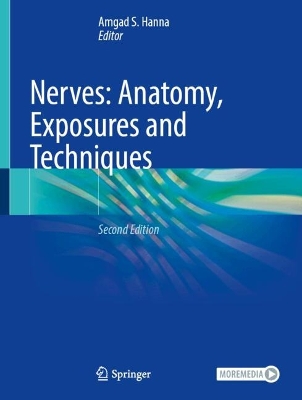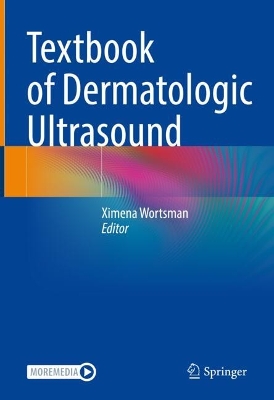Skin Necrosis
 portes grátis
portes grátis
Skin Necrosis
Probst, Sebastian; Meaume, Sylvie; Akita, Sadanori; Del Marmol, Veronique; Teot, Luc
Springer International Publishing AG
01/2025
526
Dura
9783031609534
Pré-lançamento - envio 15 a 20 dias após a sua edição
Descrição não disponível.
Part I. Definitions, Physiopathology, Vascular and Imaging Investigations in Skin Necrosis.- 1. Introduction to Vascular and Imaging Investigations in Skin Necrosis.- 2. Dry Necrosis, Wet Necrosis: When to Debride, When Not to Debride and Practical Debridement.- 3. Ischemia/Reperfusion: A Potential Cause for Tissue Necrosis.- 4. Imaging, Vascular Assessment: Extension in Depth and Vascular Anomalies.- 5. Imaging of Hypodermal Fat Necrosis.- 6. Skin Necrosis and the Need for Vascular Assessments.- 7. Arterial and Mixed Leg Ulcer.- Part II. Different Clinical Context of Skin Necrosis Physical Injuries.- 8. Introduction to Physical Injuries in Skin Necrosis.- 9. Skin Mechanobiology: From basic science to clinical applications.- 10. Necrotic Burns.- 11. Electrical Burns.- 12. Gunshot Wounds.- 13. Frostbite.- 14. How to Manage Radiation Injuries.- 15. Excessive internal pressure (dissecting haematoma, evisceration, etc.).- 16. Telemedicine in Skin Necrosis.- Part III. Skin Necrosis of Toxic Origin .- 17. Introduction to skin necrosis of toxic origin.- 18. Resuscitation Foot Necrosis: A New Entity for a Complex Management.- 19. Skin Necrosis and Ulcers Induced by Medications.- 20. Toxic Syndromes.- 21. Skin Necrosis due to Snakebites.- 22. Skin Necrosis in Jelly fish, Stone fish.- 23. Skin Necrosis from Coma Blister (physiopath. approach).- Part IV. Skin Necrosis of Medical Origin.- 24. Introduction to Skin Necrosis of Medical Origin.- 25. Rheumatoid and Systemic Collagenosis Vasculitis.- 26. Giant Cell Arteritis.- 27. Hidradenitis Suppurativa.- 28. Martorell Hypertensive Ischemic Ulcer.- 29. Vasculitis.- 30. Necrobiosis Lipoidica.- 31. Purpura Fulminans.- 32. Protein C and Protein S Deficiencies.- 33. Renal Insufficiency and Necrosis.- 34. Calciphylaxis.- 35. Livedo(id) Vasculitis.- 36. Pyoderma Gangrenosum.- 37. Cryoglobulinemia.- 38. Necrosis of the Upper Extremities.- 39. Factitious Disorders (Pathomimia) and Necrosis.- Part V. Skin Necrosis of Infectious Origin.- 40. Introduction to Necrosis and Infection.- 41. Fusarium solani.- 42. Fournier Gangrene.- 43. Necrotizing Fasciits.- Part VI. Surgical Context of Skin Necrosis.- 44. Introduction to Skin Necrosis in a surgical context.- 45. Skin Necrosis Over Osteosynthetic Material.- 46. Necrotic Complications After Skin Grafts.- 47. Arterial Leg Ulcers.- 48. Prevention of skin necrosis in cosmetic surgery.- 49. Flap necrosis prevention using leeches.- 50. Revascularisation techniques to prevent limb amputation presenting distal necrosis.- 51. Skin reconstruction using dermal substitute after skin necrosis.- 52. Skin Necrosis of Diabetic Foot and Its Management.- 53. Skin Necrosis of Diabetic Foot and Its Microsurgical Management.- 54. Exposed Necrotic Tendons.- 55. Dissecting Haematomas in Patients Submitted to Anticoagulation.- 56. Management of the Patient After Flap Failure.- Part VII. Techniques Applicable to Skin Necrosis.- 57. Introduction to Techniques Applicable to Skin Necrosis.- 58. Dressings for Necrosed Skin.- 59. Surgical Debridement.- 60. Stabilisation of Necrotic Tissue Using Cerium Nitrate Silver Sulfadiazine.- 61. Honey Debridement.- 62. Recent Technologies in Necrosis Surgical Debridement.- 63. Regulations for Conservative Sharp Debridement for Nurse in Europe.- 64. Regulations for Conservative Sharp Debridement for Nurses in the USA.- Part VIII. Skin Necrosis in Children.- 65. Introduction to Skin Necrosis Treatment in Young Age.- 66. Skin Necrosis in Children: Physical and Infectious Causes.- 67. Neonatal Pressure Ulcer.- 68. Skin Necrosis in Children: Genodermatosis.- 69. Skin Necrosis in Children: Vascular Causes and Angioma.- Part IX. Skin Necrosis in Elderly patients 70. Introduction to Skin Necrosis Treatment in Elderly Patients.- 71. Pressure Necrosis in Geriatric Patients.- 72. Deep Dissecting Hematoma : a frequent cause of necrosis in elderly patient.- Part X. Education on Debridement.- 73. Introduction to Education on Debridement.- 74. Non-specialised nurses and debridement.- 75. how to become an expert in debridement? Nurse perspective.- 76. how to become an expert in debridement? Physician perspective.- 77. Regulations for conservative sharp debridement for nurses in Europe.- 78. Regulations for Conservative Debridement for Nurses in North America.- 79. Distance Skin Necrosis Management.
Este título pertence ao(s) assunto(s) indicados(s). Para ver outros títulos clique no assunto desejado.
debridement;necrosis;ulcers;wound care;wound dressing;wound healing;Open Access
Part I. Definitions, Physiopathology, Vascular and Imaging Investigations in Skin Necrosis.- 1. Introduction to Vascular and Imaging Investigations in Skin Necrosis.- 2. Dry Necrosis, Wet Necrosis: When to Debride, When Not to Debride and Practical Debridement.- 3. Ischemia/Reperfusion: A Potential Cause for Tissue Necrosis.- 4. Imaging, Vascular Assessment: Extension in Depth and Vascular Anomalies.- 5. Imaging of Hypodermal Fat Necrosis.- 6. Skin Necrosis and the Need for Vascular Assessments.- 7. Arterial and Mixed Leg Ulcer.- Part II. Different Clinical Context of Skin Necrosis Physical Injuries.- 8. Introduction to Physical Injuries in Skin Necrosis.- 9. Skin Mechanobiology: From basic science to clinical applications.- 10. Necrotic Burns.- 11. Electrical Burns.- 12. Gunshot Wounds.- 13. Frostbite.- 14. How to Manage Radiation Injuries.- 15. Excessive internal pressure (dissecting haematoma, evisceration, etc.).- 16. Telemedicine in Skin Necrosis.- Part III. Skin Necrosis of Toxic Origin .- 17. Introduction to skin necrosis of toxic origin.- 18. Resuscitation Foot Necrosis: A New Entity for a Complex Management.- 19. Skin Necrosis and Ulcers Induced by Medications.- 20. Toxic Syndromes.- 21. Skin Necrosis due to Snakebites.- 22. Skin Necrosis in Jelly fish, Stone fish.- 23. Skin Necrosis from Coma Blister (physiopath. approach).- Part IV. Skin Necrosis of Medical Origin.- 24. Introduction to Skin Necrosis of Medical Origin.- 25. Rheumatoid and Systemic Collagenosis Vasculitis.- 26. Giant Cell Arteritis.- 27. Hidradenitis Suppurativa.- 28. Martorell Hypertensive Ischemic Ulcer.- 29. Vasculitis.- 30. Necrobiosis Lipoidica.- 31. Purpura Fulminans.- 32. Protein C and Protein S Deficiencies.- 33. Renal Insufficiency and Necrosis.- 34. Calciphylaxis.- 35. Livedo(id) Vasculitis.- 36. Pyoderma Gangrenosum.- 37. Cryoglobulinemia.- 38. Necrosis of the Upper Extremities.- 39. Factitious Disorders (Pathomimia) and Necrosis.- Part V. Skin Necrosis of Infectious Origin.- 40. Introduction to Necrosis and Infection.- 41. Fusarium solani.- 42. Fournier Gangrene.- 43. Necrotizing Fasciits.- Part VI. Surgical Context of Skin Necrosis.- 44. Introduction to Skin Necrosis in a surgical context.- 45. Skin Necrosis Over Osteosynthetic Material.- 46. Necrotic Complications After Skin Grafts.- 47. Arterial Leg Ulcers.- 48. Prevention of skin necrosis in cosmetic surgery.- 49. Flap necrosis prevention using leeches.- 50. Revascularisation techniques to prevent limb amputation presenting distal necrosis.- 51. Skin reconstruction using dermal substitute after skin necrosis.- 52. Skin Necrosis of Diabetic Foot and Its Management.- 53. Skin Necrosis of Diabetic Foot and Its Microsurgical Management.- 54. Exposed Necrotic Tendons.- 55. Dissecting Haematomas in Patients Submitted to Anticoagulation.- 56. Management of the Patient After Flap Failure.- Part VII. Techniques Applicable to Skin Necrosis.- 57. Introduction to Techniques Applicable to Skin Necrosis.- 58. Dressings for Necrosed Skin.- 59. Surgical Debridement.- 60. Stabilisation of Necrotic Tissue Using Cerium Nitrate Silver Sulfadiazine.- 61. Honey Debridement.- 62. Recent Technologies in Necrosis Surgical Debridement.- 63. Regulations for Conservative Sharp Debridement for Nurse in Europe.- 64. Regulations for Conservative Sharp Debridement for Nurses in the USA.- Part VIII. Skin Necrosis in Children.- 65. Introduction to Skin Necrosis Treatment in Young Age.- 66. Skin Necrosis in Children: Physical and Infectious Causes.- 67. Neonatal Pressure Ulcer.- 68. Skin Necrosis in Children: Genodermatosis.- 69. Skin Necrosis in Children: Vascular Causes and Angioma.- Part IX. Skin Necrosis in Elderly patients 70. Introduction to Skin Necrosis Treatment in Elderly Patients.- 71. Pressure Necrosis in Geriatric Patients.- 72. Deep Dissecting Hematoma : a frequent cause of necrosis in elderly patient.- Part X. Education on Debridement.- 73. Introduction to Education on Debridement.- 74. Non-specialised nurses and debridement.- 75. how to become an expert in debridement? Nurse perspective.- 76. how to become an expert in debridement? Physician perspective.- 77. Regulations for conservative sharp debridement for nurses in Europe.- 78. Regulations for Conservative Debridement for Nurses in North America.- 79. Distance Skin Necrosis Management.
Este título pertence ao(s) assunto(s) indicados(s). Para ver outros títulos clique no assunto desejado.







